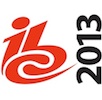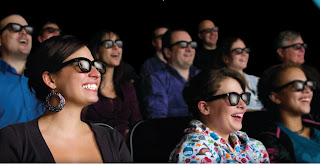 |
| Pic: xkcd |
"A few voices out there...have begun pointing out the obvious: that those cameras on every street corner are coming, as surely as the new millennium. Nothing will stop them," he wrote.
He wasn't wrong.
Fast forward to 4th July 2013 and PR consultant and filmmaker Chris Barrett is walking along the Jersey Shore Boardwalk when he sees a fight break out and a subsequent arrest. Nothing atypical for the time and the place that's for certain, but Barrett was one of the first wearers of Google Glass as part of its Explorer program, and that scene was edited and uploaded onto YouTube a day later, where so far it has been watched 982,000 times and counting.
You may not be familiar with the term sousveillence, which considering how ugly it is is not much of a surprise, but it is a useful term. It unpacks surveillance — from the French sur, meaning "from above”; and veiller, "to watch” — and substitutes the prefix sous, "from below”. The cameras, in other words, are everywhere…
There has of course been much angst about the development of citizen journalism over the years, but none of that seems to have stopped its continuing use as the voracious maws of the 24 hour news channels gobble up content. Indeed, any trade show you cared to attend over the past years has likely featured new tools for ingesting and processing video sent in from viewers’ camera phones along with the prerequisite software for regurgitating Tweets and other socially-generated material on screen.
Google Glass though feels like a tipping point into something else entirely. A five megapixel camera is capable of recording 720p video and, as Barrett observed to website VenutreBeat, “I think if I had a bigger camera there, the kid would probably have punched me. But I was able to capture the action with Glass and I didn’t have to hold up a cell phone and press record.”
Google Glass hits the mass market in the spring according to the company’s own estimates and there are already news outlets prepping for it. CNN has an entire citizen journalist service, iReport, ready to go for it, which already features an assignment desk for mobile phone users, and there are any number of start-ups looking to aggregate cloud-sourced video of events automatically into a single video narrative with no editorial input whatsoever. Check out the likes of Ushahidi, which allows thousands of people to report on an event and place their reports on an interactive map.
In the spirit of Brin’s essay it’s almost pointless asking whether this is a good thing or not: to coin a phrase, ‘the avalanche has started, it is too late for the pebbles to vote’. What may hold Glass back from actual news organisation deployment just now is an under-specced mic for broadcast work, plus the fact that without the physical presence of even a cameraman reporters find themselves jostled, separated from their interviewee and generally swallowed up in oblivious crowds.
As far as the public and potential citizen journalists are concerned though, little holds them back apart from the law. And while it is moving fast — the UK’s Department of Transport is already implanting a ban on Glass-wearing while driving, for instance —whether it is moving fast enough to catch up is another matter entirely. There may well be another explosion of citizen journalist-sourced content on its way.


















